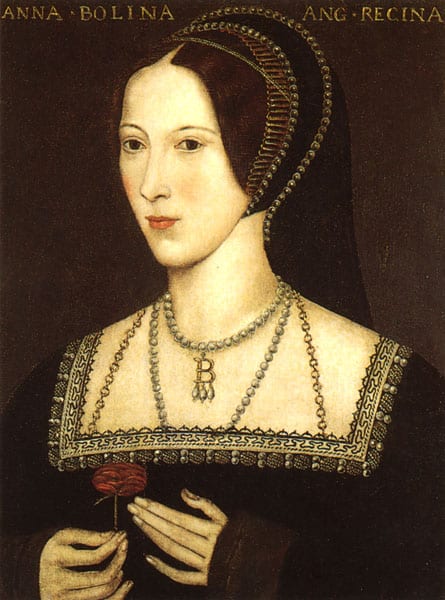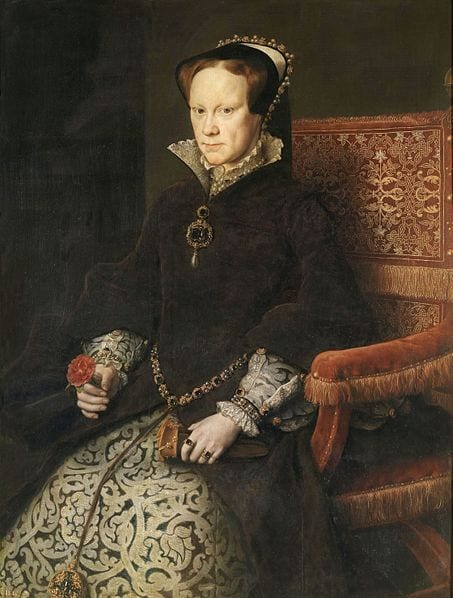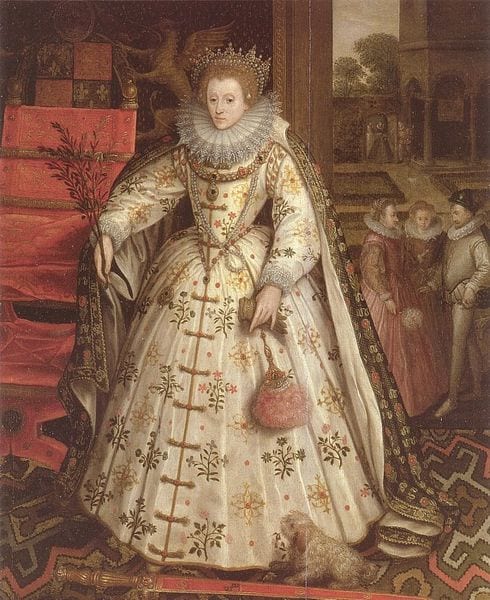Timeline
Background
In a hardly post-Chaucerian Europe, the corruption of the Roman Catholic Church was rather suddenly brought to light. Those who were intellectually able enough to read hand-printed works of the time began to reason that the actions of the Church seemed to directly conflict with the written word of the Gospel. However, these scholarly individuals were few and far between, lacking the ability to distribute information to a populace ruled by the spoken word of the clergy (which, as is clearly seen in the stories of
The Canterbury Tales, was often tainted by the depravity of man). In retrospect, from what seems like a fleeting moment of the turbulent epoch came a change in the entire structure of the papacy and the Christian faith. This change is now known as the Protestant Reformation.
| Martin Luther |

The Protestant Reformation began on October 31, 1517, when German priest Luther posted his Disputation of Martin Luther on the Power and Efficacy of Indulgences, which otherwise became known as his 95 Theses, on the door of the church. The theses outlined all of the problems he had with the Catholic Church, specifically the sale of indulgences, which the church sold to sinners in exchange for forgiveness from God. According to the textbook, Luther believed that “the church had degenerated into a corrupt, worldly conspiracy designed to bilk the credulous and subvert secular authority” (Norton 538).
The spread of the Protestant Reformation was also fostered by Gutenberg’s creation of the printing press. Luther’s 95 Theses didn’t become widespread until January of 1518, when his associates translated them from Latin to German, then printed and distributed them. In two weeks, they had spread across Germany. In two months, across Europe. The Protestant Movement was one of the first disputes in history to be aided by the printing press.

|
| Portrait of Henry VIII by Hans Holbein the Younger |
Henry and His Children
The Protestant Reformation hit the English Monarchy out of a failed marriage. King Henry VIII was married to his brother’s widow, Catherine of Aragon. The royal couple quickly consummated the marriage, however were shortly devastated when the Queen gave birth to a stillborn. The next child, a male named Henry who died fifty two days after birth. The third and fourth and sixth pregnancies ended much the same as the first. The only truly successful pregnancy was their fifth which blessed the couple with their daughter Mary (who would later be known as Bloody Mary) in 1516 (Dewhurst). Henry grew more and more displeased with his lack of a male heir to the throne and began to find a replacement for his aging wife.
After finding a Protestant woman, Anne Boleyn, the King was ready to remarry and produce a male heir; all he need was the consent of the Pope to get a divorce (Trueman). The only way to get a divorce at the time was to go through the Roman Catholic Church, which refused to grant such things without overwhelming reasons to do so. The King began his efforts to be granted a divorce as early as 1524 and on June 22, 1527 King Henry VIII approached Catherine and proclaimed that they had been living in mortal sin and that they must separate or be damned to eternal hell (“Timeline of the English Reformation”). Both the King and Cardinal Wolsey and continued their fight to have his first marriage dismissed on the grounds that his wife had consummated her marriage with Henry’s brother Arthur Prince of Wales and the Bible forbid a man from sleeping with his brother’s wife. Pope Clement VII had granted a dissolution of marriage to Henry’s sister Margaret in 1528, giving the King hope for the same (Jokinen).
However, Catherine the Great’s nephew, King Charles V had a firm hold on the papacy and urged the Pope to delay the hearings as much as possible and ultimately to deny the dissolution. When Cardinal Wolsey was charged with praemunire on October 9,1529 after failing to get Henry and Catherine’s marriage annulled, there was a great spot to be filled in the bureaucracy (Hall). The King assembled what is now referred to as the Reformation Parliament, in charge of finding a way to get Henry his desired divorce. Henry then granted Thomas More Wolsey’s position as Lord Chancellor, who pushed the king to put forth acts against heresy, which would allow charges to be placed on radicals such as the Lutherans (Timeline of the Reformation and Restoration Periods”). As a devout Catholic his long friendship with Henry VIII started to turn sour, and More insisted on resigning, eventually doing so on May 16, 1532 (“Timeline of the English Reformation”.
 |
| Mary I by Anthony Moris |
Thomas Cromwell was appointed Thomas More’s position shortly after and persuaded the King to officially break from the papacy. King Henry VIII finally married Anne
 |
| “The Peace Portrait of Elizabeth I” by Marucs Gheeeraerts |
Boleyn on January, 25, 1533 resulting in Pope Clement VII excommunicating Henry (“Timeline of the English Reformation”). Shortly after, Thomas Cromwell put forth the Act in Restraint of Appeals, which forbid any appeals to the papacy and put England in charge of any issues related to the clergy. Henry furthered this in 1534 with the signing of the Act of Supremacy which forced the public to swear an oath of supremacy declaring that Henry was the “supreme Head of the Church of England” and recognized his marriage with Queen Anne. Failure to do so would be considered high treason, punishable by death, a fate which Thomas More and many others suffered as a result (“Act of Supremacy”).
The Reformation broke new ground in 1536 when Thomas Cromwell took charge of the dissolution of the monasteries in England, resulting in the ransacking and removal of monks in 327 monasteries across the country. The final monastery, Glastonbury Abbey, was dissolved in 1539, destroying one of the most sacred religious buildings all of its possessions (Clarke). King Henry VIII died on January 28, 1547 leaving Edward VI, son of his third marriage with Jane Seymour, as the king of England. In 1549 a uniform Protestant service becomes standard in England with the use of Edward VI’s book of Common Prayer (“Timeline of the English Reformation”). With Edward’s death on July 6, 1553 Lady Jane Grey reigned as Queen for a mere nine days followed by the reign of Henry VIII’s oldest child, Mary.
Mary I took the religious views of her mother, Catherine the Great, and spent her reign trying to turn England back to Catholicism, restoring control to the papacy and removing the title of Supreme Head of the Church as well as bringing back Roman Catholic Bishops. Her introduction of heresy laws resulted in hundreds of Protestants being burned at the stake. The Queen’s health took a turn for the worst and on November 17, 1558 never having given birth to an heir to her throne (“History of the Monarchy”). As a result, her half sister Elizabeth took the thrown with an even more adamant stance against Catholicism than her mother, Anne Boleyn, and quickly wiped away all of Mary’s work. Restoring the title of Supreme head of the Church, Protestantism took a firm grasp as England’s official religion.
The Effect on Society
The abrupt changes to the English society were the result of Martin Luther’s attack on the Catholic religion and the Pope. The social caste system that had been based on clergy and nobility for hundreds of years began to crumble. People began questioning the government, the church, and authority in general. The monks and nuns were kicked out of their cloisters and possessions were sold off (Norton 671). Important aspects of the result of the Protestant Reformation was that sin was forgiven through faith in God instead of the sale of indulgences, and scripture was taught in the common language instead of in Latin. This resulted in less strength of the clergy and an arguable decrease in the amount of corruption in the church system.
As a result of the constant shifts in religion, the Protestant Reformation affected the English society in a drastic way. The people of England were now obligated to choose between their allegiance to their ruler or their religion. After Henry VIII’s death in 1547, his successors changed the religion from Catholicism to Protestantism. It was a religion tug of way between the Catholics and Protestants for many years. When King Henry VIII’s son took the throne, at ten years old, Edward VI and his supervisors, the Dukes of Somerset and North Cumberland, enforced Protestantism for the first time. When Edward VI passed away in 1553, he was succeeded by Mary, a devout Catholic who changed the national religion back to Catholicism. Openly Protestant believers were persecuted. They were forced to convert back to Catholicism, leave the country, or were burned at the stake (Norton 672). Five long years later, when Mary I died, her sister, Elizabeth I, reestablished Protestantism as the Church of England’s religion. However, some England people had a difficult time accepting this new religion because they were attached to Catholicism.
The Reformation was a very unsettling time to be an Englishman, especially if you were part of the court. With the religion constantly switching back and forth, the people of England were left to accept whatever religion was being backed at the particular time or face death. However if they became to adamant about the cause, they too risked execution if the tides turned as Thomas More and Thomas Cromwell both experienced. Along with these two men, hundreds of others were executed for their religious beliefs, Catholics, Puritans, and Lutherans alike. CITATION?What made matters even worse was the constant debate over who was to rule the country after Henry VIII’s death. After the birth of Elizabeth, people were forced to swear allegiance to her as the successor to the throne despite Mary’s assertion that she was the rightful heir. When Edward is born this gets mixed up again, as males come first in the line of succession. However, his young age meant that he had to have a supervisor, whose position was highly sought after. Things get even more complicated then that when Lady Jane takes the throne for a mere nine days before being executed. The constant uncertainty of who is in charge and what religion to believe made living in England very nerve wracking.
 |
| The execution of Lady Jane Grey in the Tower of London in the year 1554 |
Revolts against the Churches in the “Low” Countries
- Rebels revolted against Henry VIII for the sacking of monasteries in the Low Countries
- Leaders brought to the king who promised to look at their requests
- Henry persecutes the leaders for high treason and has them killed (Duke)
The Religious Wars in France (1562-1589)
- Catholics vs Huguenots (French Protestants)
- Saint Bartholomew’s Massacre
-Catherine deMidici persuaded her son, King Charles IX, to lead a massacre against the Huguenots.
-Over 8,000 Huguenots were murdered. - Edict of Nantes (“French Protestant Reformation”)
The Religious Wars in Spain
- Mary Queen of Scots executed
- Spanish Armada
The Thirty Years War (1618-1648)
- The most devastating war in Europe that was between Catholic and Protestant states in the Holy Roman Empire
- Ended with the Treaty of Westphalia (“Thirty Years War”)
 |
| Thomas More |
Influential Authors of the Reformation
Sir Thomas More (1478-1535)
“Sir Thomas More was born in London and was a lawyer, scholar, writer, member of parliament and chancellor under the reign of King Henry VIII” (BBC). Upon becoming lord chancellor, More put much of his energy into the anti-Protestant campaign against Martin Luther. He was very fervent in his belief of the Catholic Church and his opinion against Protestantism; for example, More disagreed fiercely with Tyndale’s interpretation of the Bible and communicated this in written attacks. Further, More aided King Henry VIII in writing his invalidation of Protestantism titled The Defense of The Seven Sacraments. “More had two issues with Lutheranism: (1) He disagreed with Luther’s notion that Christians could not enrich their own salvation through good deeds and (2) he disagreed with Luther’s interpretation of the text” (Norton 679). More wrote A Dialogue Concerning Heresies in 1529 in which he creates a dialogue between himself and a young man interested in Protestant ideas; his goal with this text was to turn English men and women away from practicing Protestantism (Norton 679) More is best known for his early work, Utopia, written in 1515, in which he describes an imaginary society and political system. In 1534 Henry declared himself head of the English Church and More did not agree with this; he would not acknowledge Henry as the head and was eventually convicted of treason and was beheaded on July 7, 1535 (Bridgett).
John Calvin (1509-1564)
 |
| John Calvin by J.F. Cazenave |
Born in Picardy France in 1509, “John Calvin possessed one of the most brilliant minds among Reformation theologians, sparking a movement that revolutionized the Christian church in Europe, America, and ultimately the rest of the world” (Zavada). After studying civil law in college, Calvin left France where he was born Catholic. He traveled to Geneva, Switzerland and preached about Protestant beliefs. Calvin wrote Institutes of the Christian Religion in 1536 about aspects of Protestantism; it is considered one of the most important works from the Reformation period. Upon being asked to leave Geneva after religious conflict, Calvin moved to Strasbourg, France but eventually returned to Geneva. Over time, Calvin’s beliefs began to move away from those of Catholicism and Protestantism. “He taught that God divides humanity into two groups: the Elect, who will be saved and go to heaven, and the Reprobates, or damned, who will spend eternity in hell. This doctrine is called predestination. (Zevada)” Calvin also believed in Limited Atonement; this is the notion that Jesus only died for certain people, or the “elect.” Further, Calvin believed that those who were “elect” could not resist God’s call to Heaven (Zavada). Calvin’s opinions were rather extreme, but, nevertheless, there are still those that follow his thought today. His religious views and doctrines are now known as Calvinism.
References
“Act of Supremacy (England [1534]).” Encyclopedia Britannica Online. Encyclopedia Britannica, n.d. Web. 06 Dec. 2012.
“Christianity – Protestant Reformation France Religious Wars.” The French Protestant Reformation. N.p.. Web. 6 Dec 2012. <http://histclo.com/act/rel/faith/christ/refor/fra/rw.html>.
Clarke, Lindsay. “The Dissolution of the Monasteries in the 16th Century.” History Net Where History Comes Alive World US History Online The Dissolution of the Monasteries in the 16th Century Comments. British Heritage, 12 June 2006. Web. 06 Dec. 2012.
Dewhurst, John. “The Alleged Miscarriages of Catherine of Aragon and Anne Boleyn.” Medical History Journals 28.1 (1984): n. pag. National Center for Biotechnology Information. Web. 6 Dec. 2012. <http://http:www.ncbi.nlm.nih.gov/pmc/articles/PMC1139382/?page=1>.
Duke, Alastair. E Reformation and Revolt in the Low Countries. New York: Continuum International, 2003.
Hall, Edward. “Primary Sources: The Fall of Cardinal Thomas Wolsey, 1530.” English History. N.p., n.d. Web. 06 Dec. 2012. <http://englishhistory.net/tudor/priwols1.html>.
“History of the Monarchy The Tudors Mary I.” The Official Website of the British Monarchy. N.p., n.d. Web. 06 Dec. 2012.
Jokinen, Anniina. “The Life of King Henry VIII.” Luminarium. N.p., 11 Aug. 2006. Web. 06 Dec. 2012. <http://www.luminarium.org/renlit/tudorbio.htm>.
The Norton Anthology English Literature: The Sixteenth Century/The Early Seventeenth Century. Ed. Stephen Greenblatt et al. Vol. B. New York: W. W. Norton & Company, 2012. Print.
“Thirty Years’ War (European History).” Britannica Online Encyclopedia//. N.p.. Web. 6 Dec 2012. <http://www.britannica.com/EBchecked/topic/592619/Thirty-Years-War>.
“Thomas More.” BBC. N.p.. Web. 6 Dec 2012. <http://www.bbc.co.uk/history/historic_figures/more_sir_thomas.shtml>.
“Timeline of the English Reformation.” Wikipedia. Wikimedia Foundation, 11 Mar. 2012. Web. 06 Dec. 2012.
“Timeline of the Reformation and Restoration Periods.” Timeline of the Reformation and Restoration Periods. N.p., n.d. Web. 06 Dec. 2012. <http://www.britannia.com/history/reftime.html>.
Trueman, Chris. “The Reformation.” The Reformation. N.p., n.d. Web. 06 Dec. 2012. <http://www.historylearningsite.co.uk/reformation.htm>.
T. E. Bridgett, Life and Writings of Blessed Thomas More (1913). <http://www.historyguide.org/earlymod/stmore.html>
“William Shakespare.” bio. N.p., n.d. Web. 6 Dec 2012. <http://www.biography.com/people/william-shakespeare-9480323>.
Zavada, Jack. “John Calvin Biography.” . N.p.. Web. 6 Dec 2012. <http://christianity.about.com/od/presbyteriandenomination/a/John-Calvin.htm>.
Images (in order of appearance): This needs fixing
https://en.wikipedia.org/wiki/Martin_Lutherhttps://sites.udel.edu/britlitwiki/files//2018/06/File3AHans_Holbein_d._J._074.jpg
https://sites.udel.edu/britlitwiki/files//2018/06/File3AMary_I_of_England.jpg
https://sites.udel.edu/britlitwiki/files//2018/06/File3AAnneboleyn2.jpg
https://sites.udel.edu/britlitwiki/files//2018/06/File3AEl_bieta_w_pC3B3_nym_wieku.jpg
https://sites.udel.edu/britlitwiki/files//2018/06/File3AExecutionJaneGrey.jpg
https://sites.udel.edu/britlitwiki/files//2018/06/File3AWilliam_Shakespeare..jpg
https://sites.udel.edu/britlitwiki/files//2018/06/File3AJohn_Calvin_21.jpg
https://sites.udel.edu/britlitwiki/files//2018/06/File3AHans_Holbein_d._J._065.jpg


